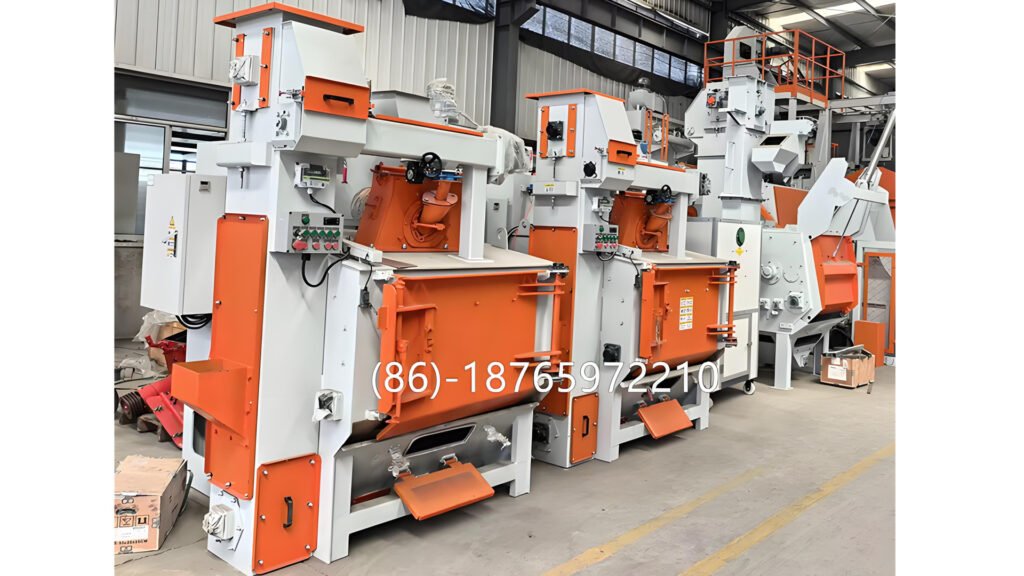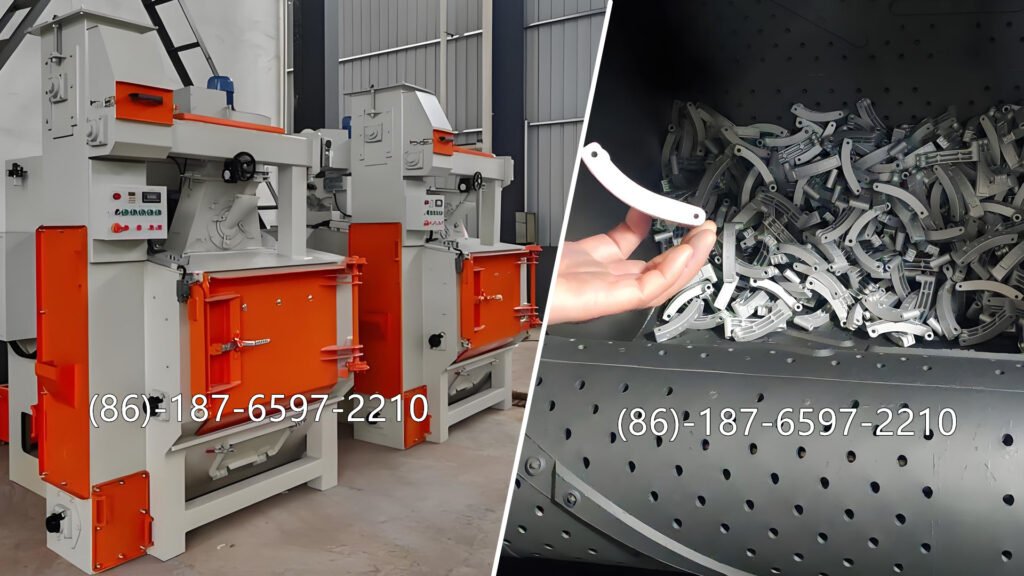Operating a tumble shot blasting machine correctly is essential for achieving high-quality cleaning results, maintaining equipment longevity, and ensuring operator safety.
A Practical Guide to Operating a Tumble Shot Blasting Machine
By a Workshop Engineer’s Perspective
Running a tumble shot blasting machine isn’t complicated, but it does require attention to detail and a bit of experience. Below is how we usually operate and maintain it in our workshop to keep it running smoothly and get the best surface results.
1. Before You Start
Always begin with a quick inspection — it saves you a lot of trouble later.
- Check the belt — the rubber belt takes a lot of stress. If it’s cracked or torn, replace it before it fails mid-run.
- Look inside the chamber — remove any leftover parts or abrasive from the last job.
- Inspect the blast wheel — blades, control cage, and impeller should be in good condition; worn blades reduce cleaning efficiency.
- Check the abrasive level — not too low, not overflowing. Consistent flow means consistent blasting.
- Dust collector — make sure it’s running and filters aren’t blocked. Poor suction leads to a dusty mess.
2. Loading the Parts
Load the workpieces evenly onto the belt — not too many at once.
Overloading just leads to poor cleaning and more wear on the belt.
For small castings, keep the load around two-thirds full.
Avoid oily or wet parts — moisture will clump the abrasive and cause uneven blasting.
Close the door tight. Don’t skip the latch check — it’s a basic safety habit.

3. Setting the Parameters
Different materials and surface conditions need different settings, but here’s a general idea:
- Blast time: 5–15 minutes
- Tumble speed: around 3 RPM
- Blast wheel speed: follow the machine’s standard speed unless you’re doing special cleaning.
We normally adjust based on the rust or scale thickness. For light cleaning, shorter cycles are enough.
4. Running the Machine
Sequence matters.
- Start the dust collector.
- Then the blast wheel.
- Finally, start the tumble belt.
You’ll hear the blast wheel ramp up and see the parts start tumbling. Everything should sound steady — no unusual vibration or metallic hitting noise. If something sounds off, stop and check before continuing.
During blasting, the belt keeps the parts tumbling while the steel shots hit every surface. The goal is even cleaning, not over-blasting.
5. Unloading
When the cycle ends, stop the blast wheel first, then the belt. Wait a few seconds for the dust to settle before opening the door.
If your machine has a reverse belt, use it — it makes unloading easier. Collect the cleaned parts and check the surface finish. You should see a uniform, matte texture.
6. After the Job
Never leave the machine dirty.
Once you’re done:
- Clean out leftover abrasive and dust.
- Check the shot level in the hopper.
- Inspect the belt and liners for wear.
- Empty the dust collector if it’s full.
Doing these small things after each batch keeps the system reliable and avoids sudden breakdowns.
7. Safety Reminders
- Always wear safety glasses, gloves, and ear protection.
- Don’t open the door while the wheel is running — the shots move fast and can cause serious injury.
- Keep the area dry and free from loose abrasives; they’re slippery.
- Disconnect power before doing any maintenance.
8. Regular Maintenance
Here’s what we usually stick to:
- Daily: Clean chamber, check shot level, inspect belt.
- Weekly: Check blast wheel blades and separator.
- Monthly: Clean dust collector filters, grease bearings.
- Quarterly: Inspect liners and replace worn parts.
Regular checks mean fewer breakdowns and more uptime.
Final Thoughts
The tumble shot blasting machine is a tough and reliable piece of equipment — if you take care of it. Operate it step by step, keep an ear open for any strange noise, and don’t skip maintenance. A well-maintained machine will give you clean, uniform parts and last for years in the shop.t blasting machine is straightforward once you understand the workflow and safety practices. Proper setup, regular maintenance, and attention to detail ensure consistent blasting quality, long equipment life, and safe operation.

